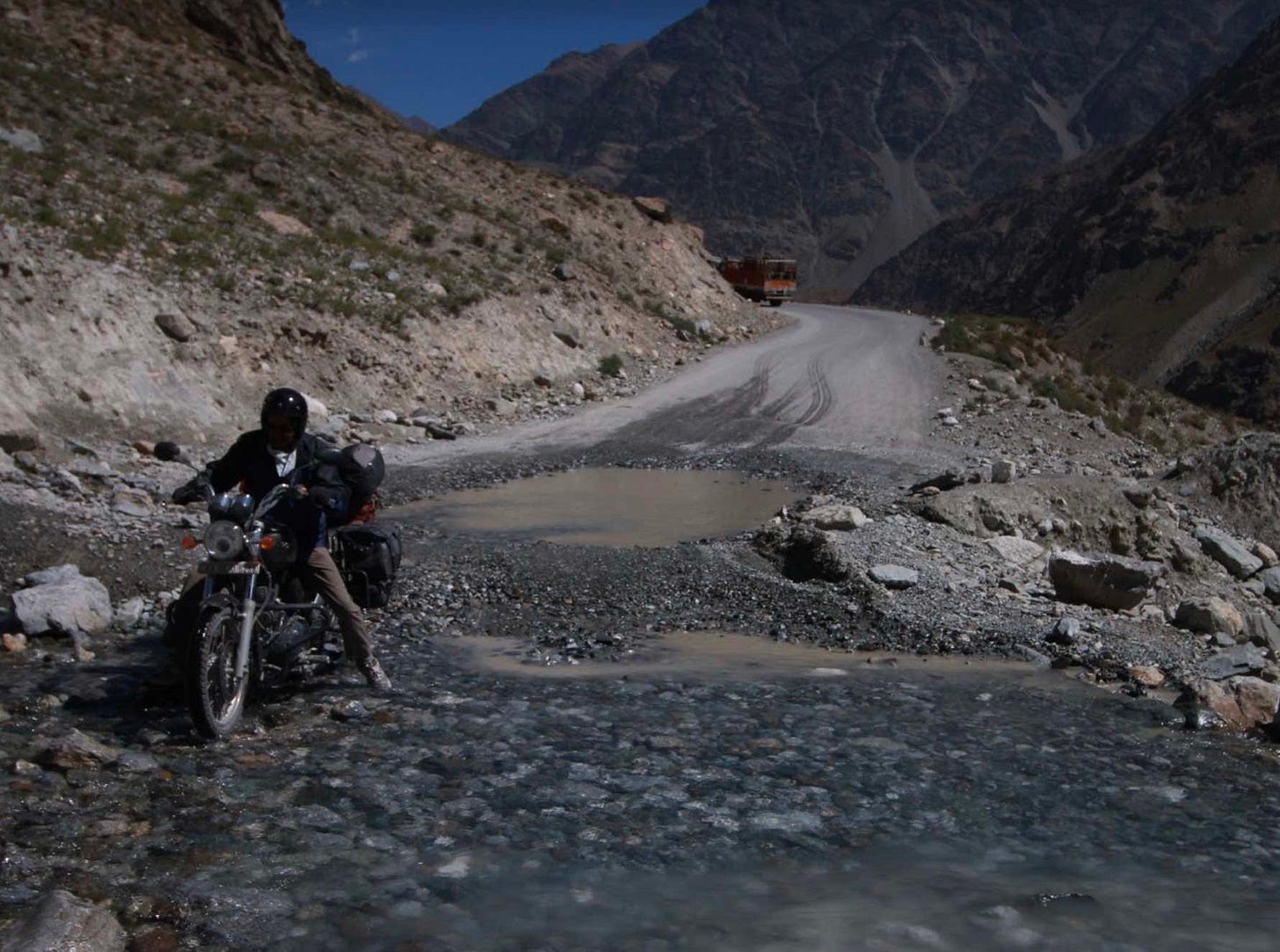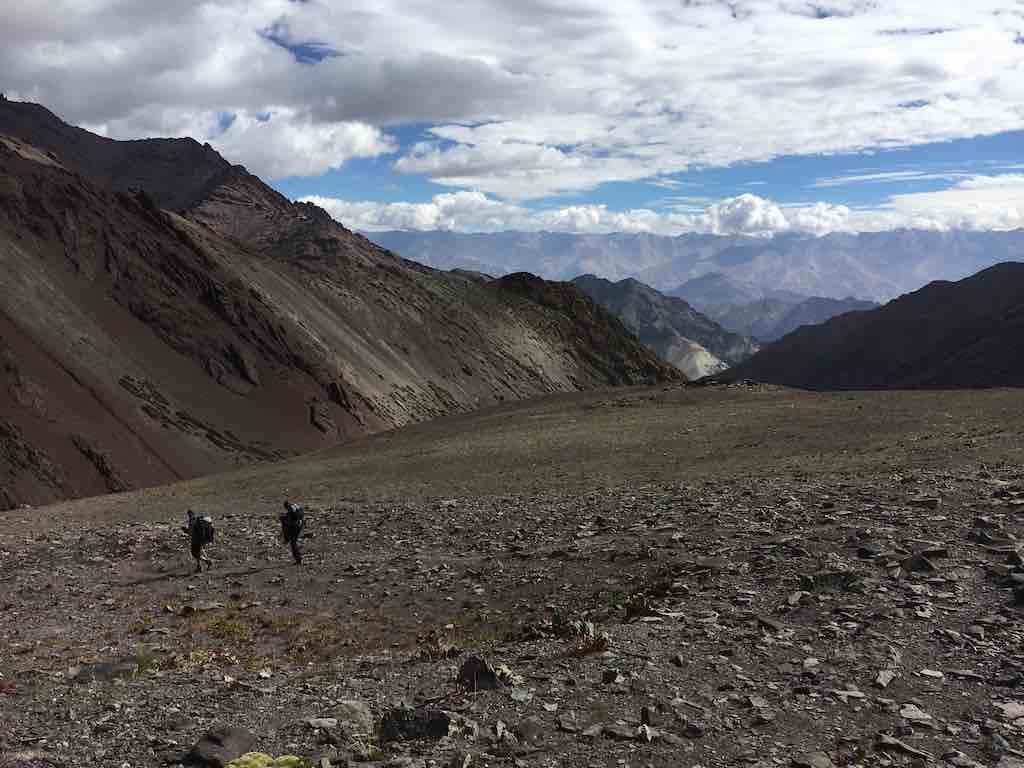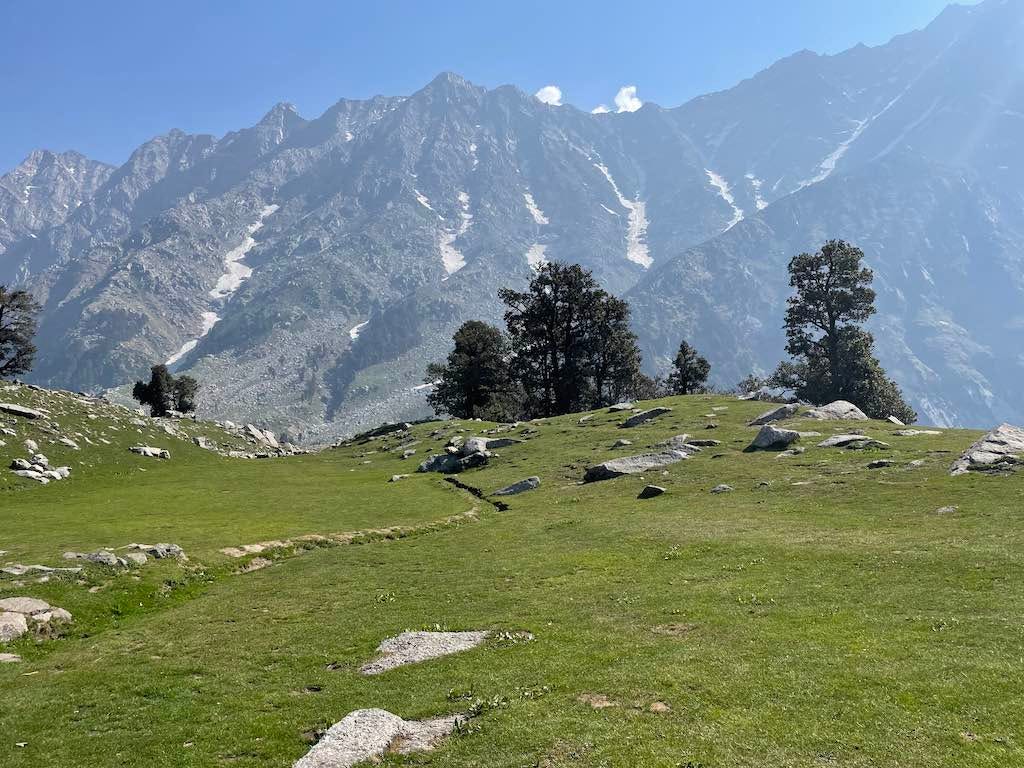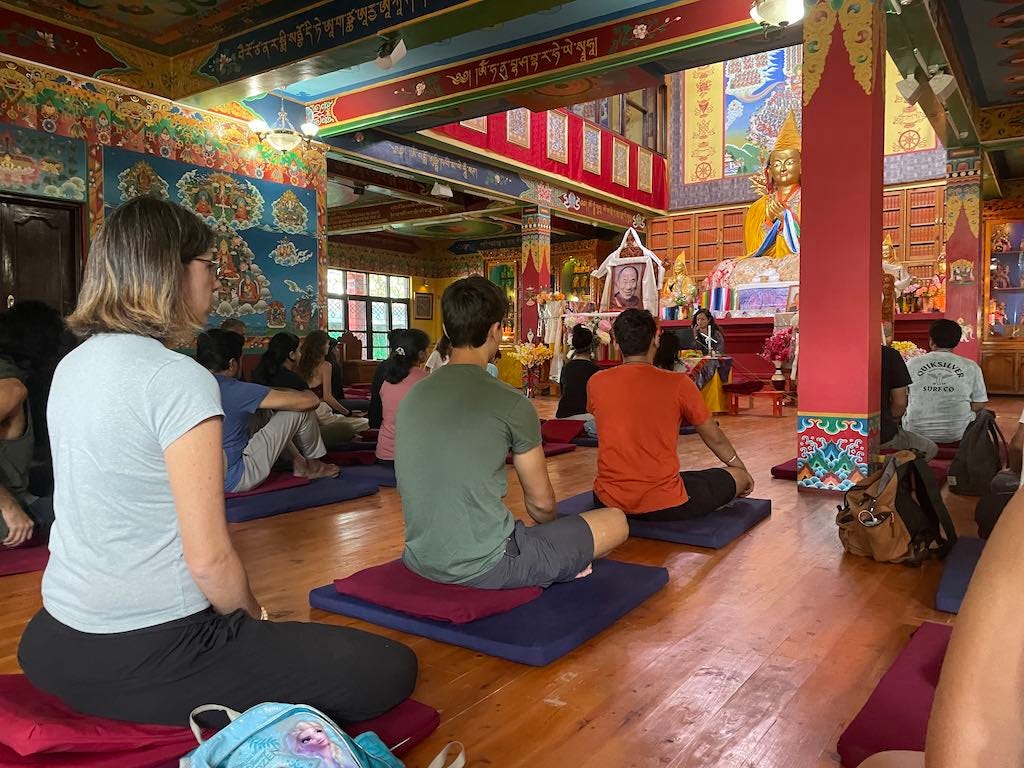Before: 2016, Leh
In August 2016, I got to Leh on my motorcycle. I was riding with an Israeli guy, Nitsan, who wanted to climb Stok Kangri, one of the only 6000m peaks you can summit without mountaineering equipment. He had convinced a young French man whose name I don’t remember, and together they were trying to convince me.
I had a tough decision to make. I could either climb this 6000er or do a Vipassana retreat and not talk for ten days. Both were things I had wanted to do for a long time. Of course, that I had this choice meant life was good.
I chose Vipassana but gave them my tent, sleeping bag, jacket, hiking boots, backpack, and a bunch of other stuff. “At least my gear will see the view from up there”, I told them and laughed.
Unrelated: A German girl whose name I also don’t remember but who rescued me from dehydration and exhaustion on the Markha Valley hike took me to the guest house she was staying at. She had bargained for a much cheaper rate, and the receptionist was very frustrated when she forced him to give me the same rate. Nitsan and the French guy were staying there too.
During: 2016, Leh
A Vipassana retreat is quite simple. You maintain a “noble silence” for ten days: no talking, no writing, no eye contact, etc. You wake up early, meditate all day except for a few small breaks, and sleep.
For the first three days, I meditated on my breath. It was refreshing because I was explicitly told not to modify the breathing pattern. Observe the air going in. Observe the air going out. Feel the air on your upper lip. This was different but similar to what my mother had taught me for much of my life.
My mother was quite advanced along the spiritual path. She started teaching us meditation when we were very young, starting with counting backwards from 100 to 1, and then moving on to all the usual suspects: pranayama, kapalabhati, bastrika, alternate nostril breathing, etc. etc. Closer to the time she died, I remember asking her to teach me some more techniques, but she told me the methods were unnecessary. “Just focus on your breath, and everything else will happen.”
On the fourth day, we started with the Vipassana technique itself. This also, refreshingly, had no magic. Just observe the sensations on your body. Head to toe, toe to head, over and over. There was one session every day after lunch where we had to refrain from making any adjustments to our posture. Even if it hurt, we had to continue scanning without paying any additional attention to the pain. I cheated, but only mildly.
Before she died, my mother was paralysed from the waist down, and she couldn’t see anything on her left. Her face came to mind quite often. On the fifth day, I discovered that I couldn’t feel anything on the left side of my face. It was like it had disappeared. I got really worried, but I couldn’t move thanks to the no-adjustments rule. It was terrifying, and I went to the office hours to task the leader (I forget what he’s called) to tell him about this. “So what?” he said. “All these things happen. Just continue scanning, and don’t give this any extra attention.”
That was some excellent advice.
On the sixth day, I felt an overwhelming sense of joy, like I was a different person. I followed a grasshopper during the break as it jumped across the sand. When I came for lunch, I saw a fly banging itself against a window, and I contemplated whether I should break the window so that it could be free.
I asked the leader guy another question on the eighth day. It was quite silly, but it was probably related to the left side of my face. “When we are scanning our body and moving from the wrist to the palm, how can I be sure the wrist still exists?”
“Imagine you are admiring a view,” he said. “Your eyes pass from one mountain to the next. Does that mean the first mountain stops existing?”
At that time, I was very impressed. But now, I think he just replaced body parts with mountains in my question and asked it back to me.
So the days passed, and the course was done.
After Part 1: Leh, 2016
My mind felt quite light after Vipassana. I liked how the technique was so simple. There are no frills, no fancy techniques: just you, your breath, and your body. Everything else will follow, just like my mother said. The philosophy (explained to us through nightly videos) claimed to be secular but couldn’t avoid the Buddhist slant. Without the assumptions of reincarnation and karma, philosophical gymnastics didn’t make sense. Still, that didn’t (and doesn’t) take away from the ingenuity of the technique.

Unrelated Part 2: I took a few of my vipassana… classmates (?) to the same guest house, promising them the same cheap rate. The receptionist took one look at me and shook his head. “[German girl] is going to ruin my hotel. I will give you the cheaper rate, but your friends have to pay in full.” No amount of haggling could change his mind
I asked if Nitsan and his friend had left my stuff in the guest house. I found everything in the storage room. So, in the end, I did do Vipassana, and my gear did make it to the top of Stok Kangri. As a gift, they had left me three neatly rolled joints.
After Part 2: Now, Dharamkot
Fast forward six years, and I find myself in Dharamkot. It is an excellent place. There are mountains, meditations, monks, and music, and that’s just the Ms. I have a good, if loose, routine here: I run alternate mornings and do yoga some of the other mornings. I drink coffee with my wife. She goes to learn Thangka Painting, and if it’s between Tuesday and Thursday, I work. At night, we do nothing in our room or go out for some live music that ranges from very good to mediocre. Things get quiet at 10 PM, which is nice. All that to say, time passes peacefully.
There is spirituality everywhere of all shapes and authenticities. Still, for this post, it’s probably relevant that there’s a place here called Tushita Meditation centre, where we meditate almost every morning in a colourful Gompa. The meditations are aligned with the Tibetan Buddhist system of thought, unlike the Vipassana centre next door, which, as I’ve recently learned, follows an approach that predates the Tibetan tradition by hundreds of years.
The more modern schools of Buddhism have added layers of philosophy and techniques on top of the original teachings. There is constant analysis and questioning, which is quite cool but different from Vipassana’s purely experiential exploration. Different strokes for different folks, as they say.
The meditations we go to these days have two parts: first, we stabilise our body and our breath (which is quite similar to Vipassana), and in the second part, we meditate on a different topic every day, ranging from fear to forgiveness to fury. And that’s just the Fs.
My Vipassana experience comes up in conversation often here. It was quite an experience, and given how much I’m talking about it these days, I thought it was time to write about it.







I am not sure what I am happiest about…
Is it the fact that this is yet another clever post by you?
Is it that you choose to share your travels and experiences that have a way of taking us with you?
Is it that you chose to mention your parents in a post?
Is it that I found a little more about the other vipassana technique?
Is it that I am trying too hard to say more nice things but my lack of imagination and super limited faculties just don’t allow me that privilege?
Is it that you and few others from our club are doing God’s work by sharing a part of their lives so beautifully?
And these are just question marks…
Thank you for choosing to write when you can so easily do a lot more.
Please do write more.
Love your mother's words of wisdom and of course the beautiful storytelling of your myriad experiences! Keep 'em coming 😊 Would love to pick your brain sometime about your experience at Tushita.... and hope to learn thangka painting some day too!